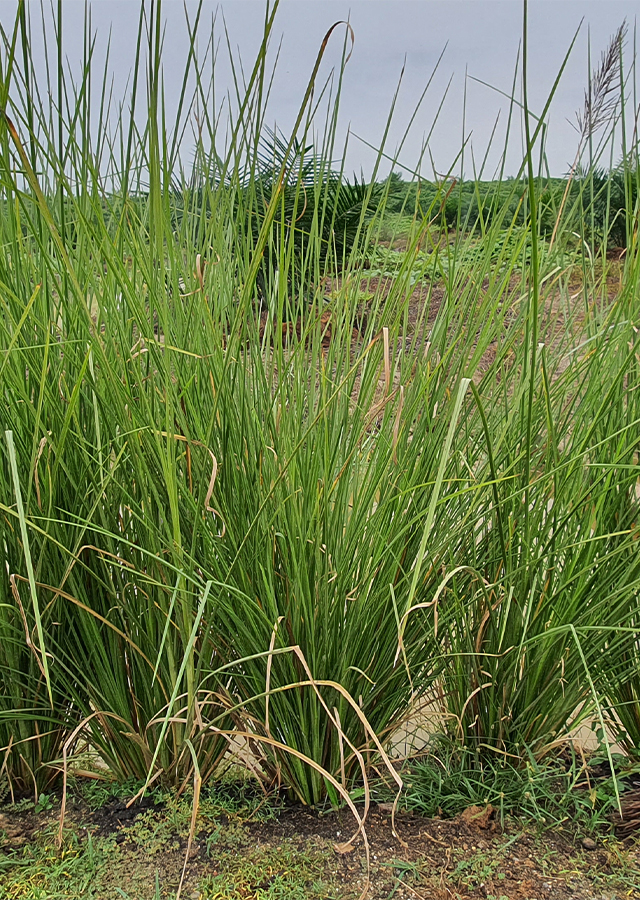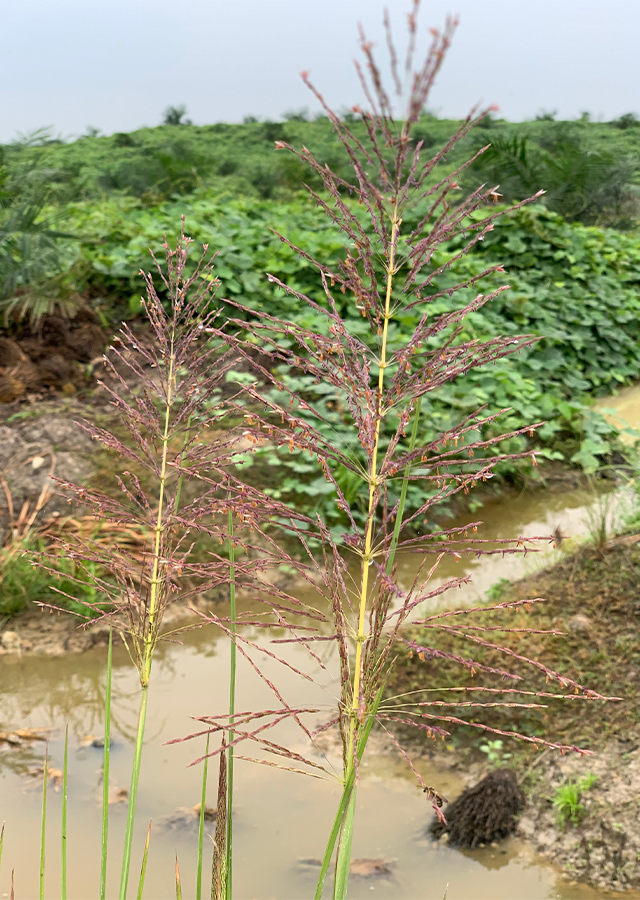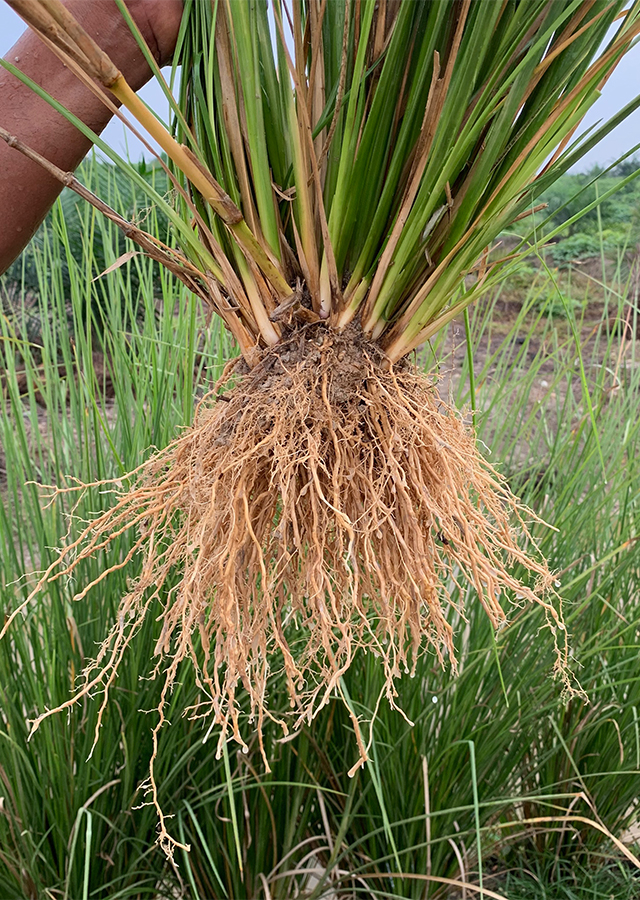Vetiver Grass
Chrysopogon zizanioides (L.) Roberty
Poaceae
Location in our garden
Principal



Synonym
Agrostis verticillata Lam.
Anatherum muricatum (Retz.) P.Beauv.
Andropogon muricatus Retz.
Habitus
Herbaceous. An evergreen, perennial grass forming large, dense clumps, 1 - 2.5 m tall
Part Used
Roots
Growing Requirements
Full Sunshine
Habitat
Wetland
Terrestrial
Overview
Vetiver grass is native to tropical and subtropical Asia, including India, Cambodia, Pakistan, Sri Lanka, Myanmar, Thailand, and Vietnam. It has been extensively introduced and can now be found naturalised in cultivation across Asia, Africa, North, Central and South America, the Caribbean, Australia and the Pacific region. It has been also cultivated for its essential oil for centuries. Currently, the major producers of vetiver oil include Haiti, India, Indonesia, and Réunion.
Vernacular Names
Xiang gen cao (Chinese), Vétiver (French), Garara (India), Khus khus (Jamaica), Moras (Philippines), Faek (Thai), Hương bài (Vietnamese).
Agroecology
Vetiver grass prefers to grow in areas with annual temperatures of 22-35 °C, and mean annual rainfall ranging from 500 mm to 2,500 mm, at elevations from near sea level to about 2,500 m. It tolerates drought, frosts, salinity, and occasional waterlogging but does not tolerate shaded conditions. It is able to establish in areas containing heavy metals such as arsenic, cadmium, chromium, nickel, lead, mercury, selenium, and zinc. It also grows in soils with high magnesium and aluminium. Vetiver is well adapted to grow in a wide range of soils such as heavy clays, loams, and poor sands, with pH ranging from 3.3 to 12.5.
Morphology
- Roots - spongy rizhome, has an extensive fibrous root system that tends to grow deep up to 4 m or more, woody, stout, and fragrant.
- Leaves - arranged in two rows, about 1 m long, 1 cm or less in width, and folded. Panicles are terminal, erect, purple or greenish, about 20 cm long, the branches are slender, whorled, spreading or ascending, 5-12 cm long. Sessile spikelets are about 4 mm long and muricate, the awn of the fourth glume is very short or absent.
Cultivation
- Vetiver cuttings are known as slips and are taken from mature plants and usually have 2-3 stems.
- Culm cutting, old, and have more mature buds and nodes in 30-50 mm lengths, including 10-20 mm over the nodes, and strip off the old leaf covers.
Chemical Constituents
Vetivone, khumisol, cadanena, cedrena, β-humulena, seskuiterpenon (benzoic acid, vetiverol, furfurol, α and β-vetivon, vetiven dan vetivenil vetivenat), alkaloids, flavonoids, tannins, phenol, terpenoids, saponins.
Traditional Medicinal Uses
Medicinal Uses
- The essential oil obtained from the roots is used medicinally as a carminative, diaphoretic, diuretic, emmenagogue, refrigerant, stomachic, tonic, antispasmodic, and sudorific.
Traditional Uses
- Decoction of roots is taken internally as a lithotripic - to dissolve or break kidney stones; externally, used for tonic baths, muscle pains, and treating lice. The root is used for thirst, inflammation, acne, and stomach irritability. Weak infusion of roots is used for fever.
- A stimulant drink is made from fresh rhizomes.
- In West Bengal, root paste is used for headache, rheumatism, and sprains. Stem decoction is used for urinary tract infection.
- In Varanasi, root vapour is inhaled for malarial fever.
- In Madhya Pradesh, the Mandla and Bastar tribes used the leaf juice as anthelmintic.

